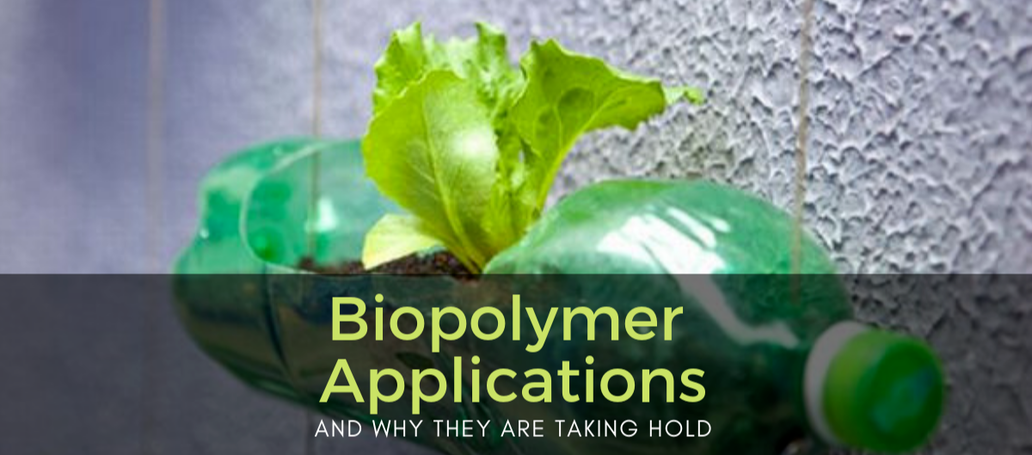What is Biodegradable Packaging
If you need help getting a bioplastic or biodegradable packaging process set up, contact our biodegradable packaging team for assistance.
Biodegradable Plastic Packaging Trends and Other Applications
Biopolymer or bioplastic applications are very limited relative to the universe of all polymer applications. Being less than 1 % of the total for all plastic applications which is about 1 trillion pounds annually. The reason is that the cost is significantly higher than oil-based plastics (PS, PE, PP) and that development has been slow due to lack of suitable composting infrastructure and limits to scalability based on raw materials and capital costs of manufacturing.
The term "bioplastic" refers to biodegradable plastics and/or plastics derived from renewable resources (the definition from European Bioplastics). Interest in bio-materials has increased significantly due to concerns related to sustainability and global climate change.
Considering the source/base of biopolymer we distinguish:
Compostable plastic is a subset of biodegradable plastic that will decompose in the conditions and time frames during composting process. Compostable plastics are always biodegradable and are very sustainable. Biodegradable plastics are not always compostable. European norm is EN 13432, and USA norm is ASTM D6400.
Bioplastic market growth is an evolution – not a revolution. Growth is based on new companies, new materials and new capacities. Bioplastics are complementary to existing fossil-based plastics – offering new options based on societal and consumer trends & demands. Packaging and food service appear to be the best fit for bioplastic application development.
Here are some of the reasons that bioplastics applications are continuing to increase:
The trend for biopolymer development is increasing and may accelerate in the future.
For a great presentation on biopolymers, please click the Link.
The term "bioplastic" refers to biodegradable plastics and/or plastics derived from renewable resources (the definition from European Bioplastics). Interest in bio-materials has increased significantly due to concerns related to sustainability and global climate change.
Considering the source/base of biopolymer we distinguish:
- natural polymers (PHA)
- modified natural polymers (viscose, methyl cellulose)
- synthetic polymers (PLA, polyesters)
Compostable plastic is a subset of biodegradable plastic that will decompose in the conditions and time frames during composting process. Compostable plastics are always biodegradable and are very sustainable. Biodegradable plastics are not always compostable. European norm is EN 13432, and USA norm is ASTM D6400.
Bioplastic market growth is an evolution – not a revolution. Growth is based on new companies, new materials and new capacities. Bioplastics are complementary to existing fossil-based plastics – offering new options based on societal and consumer trends & demands. Packaging and food service appear to be the best fit for bioplastic application development.
Here are some of the reasons that bioplastics applications are continuing to increase:
- Petroleum supplies are dwindling while demand for oil-based goods is rising.
- For every 4 barrels of oil used, only 1 new barrel is discovered. Petrochemical-based plastics consume about 2.5 billion barrels of oil annually.
- Supplies will run short within the next 20 to 100 years. Governments and consumers are demanding action to reduce dependence on oil.
- Increasing concerns over global warming, environmental pollution, toxic effects of some residual monomers and additives are driving legislation and consumer “backlash” against conventional plastics.
The trend for biopolymer development is increasing and may accelerate in the future.
For a great presentation on biopolymers, please click the Link.
Copyright Bryan Hauger Consulting, Inc 2021 All Rights Reserved - Bio Based Film & Packaging Team


